Mackinaw City & Colonial Michilimackinac - Scenic. Historic. Destination: Northern Michigan
- Ken Perrotte
- Jun 10, 2022
- 4 min read
Updated: Jun 11, 2022

A visit to beautiful Gaylord in northern Michigan for an outdoor writers conference in September 2021 yielded an opportunity to make a road trip north for an afternoon and evening in Mackinaw City, an historic place on the Straits of Mackinac, a strip of water linking Lakes Huron and Michigan. The massive Mackinac Bridge spans the straits, taking visitors to Michigan’s wild and largely unspoiled Upper Peninsula. I also got to fly-fish a couple times on the Upper Peninsula's Carp River.
Mackinaw City is a tourist town, a gateway to Mackinac Island, originally a military outpost and now home to the stately, Victorian-era Grand Hotel. Accessible by ferry, the 4.35 square miles Mackinac Island is famous for homemade fudge, tasty and expensive. That famous fudge is also widely available in Mackinaw City. In fact, one might be hard-pressed to find USA towns with more storefronts touting fudge.
Mackinaw City gave us a chance to experience two very different dining experiences. At one, the Keyhole Bar and Grill, we had a chance to taste both pan-fried walleye and blackened whitefish, a popular offering in that part of Great Lakes. It has a bit of a small, low-key, hole-in-the-wall feel in contrast to some of the bigger, more obviously touristy dining opportunities nearby. The other dining experience was at the Chippewa Room of Audie’s, said to be a favorite for local folks celebrating special occasions. It had a grand supper club sort of feel. It’s dated elegance, with loads of artifacts and memorabilia on the walls and well-prepared foods with excellent service.
I tried the Hunter’s Elk, which consisted of two filet medallions, sauteed and served with a rich, deep sauce over rice pilaf. Maria had the perfectly prepared prime rib. We also shared an escargot appetizer with the snails baked in mushroom caps and smothered in herbed butter, a wine sauce and cheese. Pretty rich stuff!
History Beckons!
Dining aside, the most fun was visiting Colonial Michilimackinac, established in 1715 on the mainland shores of the Mackinac Straits as an 18th Century fort and fur trading village. The site is extensively reconstructed, following more than 60 years of archeological excavation and using detailed maps from that era.
French soldiers constructed Fort Michilimackinac in 1715. The soldiers were mainly there to protect commerce as the community soon became the great fur trade center of the Northwest. The fort relocated to the more defensible Mackinac Island in 1781. The reconstructed version depicts the community as it would have appeared in 1779, just before relocation. The American Revolution was still in high gear and the English and French had infrequent skirmishes in the upper Midwest.

The site employs historical interpreters representing voyageurs, British soldiers, and French-Canadian merchant families throughout the fort to answer your questions and perform demonstrations, including firing of muskets and cannons. You can tour 16 buildings, each furnished with period furniture and exhibits. One exhibit shows how soldiers might have lived, including the sleeping arrangements and the spacious latrine – with special accommodations for the officers. Privilege, after all, does come with rank. You can go below ground and see how gunpowder was stored along with extensive firearms displays. The Commanding Officer’s House gives you a sense of how the senior officers enjoyed considerably more luxury that the enlisted men stationed there. There is also a chapel, the home used by whatever clergy representative was in service at the time, a merchant’s home and shop and more.
Michilimackinac: Crossroads of the Great Lakes, is a 15-minute movie, that plays every 20 minutes in the King’s Storehouse, just to the right from where you enter the fort. Check it out before you begin your personal tour. Another movie called “Attack!” is continuously shown in the Trader’s House of the Southwest Rowhouse.

The fort was a base for many raids and attacks by the French and supportive Indians. French soldiers joined with Odawa, and Ojibwa warriors to fight the Fox tribe in Wisconsin. The fort was also the base for a French expedition against the Chickasaw south of the Ohio River. In 1753, a large Indian council was held at Fort Michilimackinac with each nation agreeing to ally with the French. In 1755, warriors from Michilimackinac helped defeat British General Edward Braddock near Fort Duquesne in Pennsylvania. Following the French defeat at Montreal and the fall of Quebec in 1759, New France passes into British hands. French soldiers evacuated Fort Michilimackinac that October with the British taking control of the fort the next September following the French and Indian War. In a startling, surprise attack, the fort was attacked and captured in 1763 by local Ojibwa as part of Pontiac’s Uprising. The Indians returned the fort to the British the next year.
The reason the British moved the fort to the island was that they feared an attack by American rebels. The island location was deemed more secure and less susceptible to naval assault, although collapsing defenses to a small island also wasn’t without drawbacks.

Michilimackinac State Park was created in 1909, covering 37 acres with 2,100 feet of Great Lakes shoreline. Fort Michilimackinac is a National Historic Landmark. Tickets are available for individual visits to the fort or a broader ticket can be purchased that offers admittance to additional attractions, such as Fort Mackinac, the Mackinac Art Museum, the Old Mackinac Point Lighthouse, Historic Mill Creek Discovery Park and more. It’s definitely worth spending a day or two in this beautiful part of Michigan.
Happy Rambling!















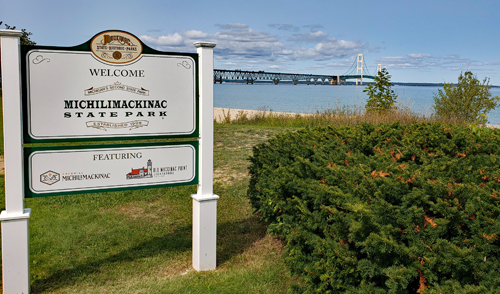







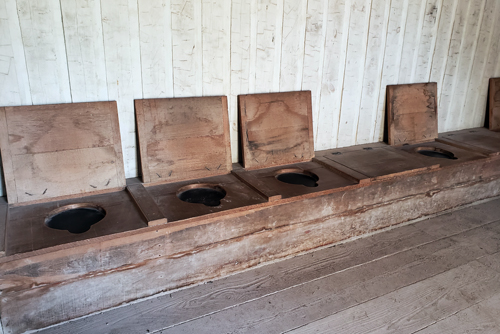

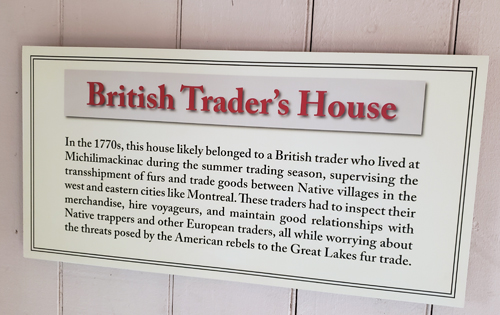








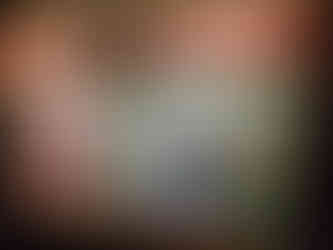






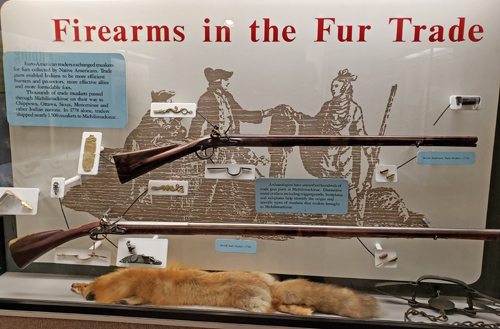

















If you're planning a trip to northern Michigan, you won't want to miss Mackinaw City and Colonial Michilimackinac! Scenic, historic, and full of charm, it’s also the perfect starting point for How to Get to Mackinac Island. Ferries are frequent, and the island’s Victorian vibes and fudge are unforgettable!